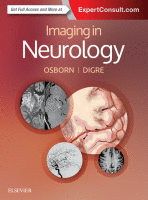Physical Address
304 North Cardinal St.
Dorchester Center, MA 02124

KEY FACTS Terminology Creutzfeldt-Jakob disease (CJD): Rapidly progressing, fatal, potentially transmissible dementia caused by prion Imaging Best imaging clue: Progressive T2 hyperintensity of basal ganglia, thalamus, and cerebral cortex Predominantly gray matter: Caudate and putamen > globus pallidus Thalamus: Common…

KEY FACTS Terminology Progressive neurodegenerative dementia caused by pathologic aggregation of α-synuclein protein in neurites (Lewy bodies) Imaging MR may differentiate Alzheimer disease (AD) from dementia with Lewy bodies (DLB) Voxel-based morphometry Relatively preserved hippocampal/medial temporal lobe volume in DLB…

KEY FACTS Terminology Clinical subtypes Behavioral-variant frontotemporal dementia (bvFTD) Primary progressive aphasia syndromes (PPA) – Semantic variant (sv-PPA) □ Previously known as semantic dementia – Nonfluent/agrammatic variant (nfv-PPA) □ Previously known as progressive nonfluent aphasia – Logopenic variant (lv-PPA) Frontotemporal…

KEY FACTS Terminology Vascular dementia (VaD), multiinfarct dementia (MID) Stepwise progressive ↓ in cognitive function Heterogeneous group of disorders with varying etiologies, pathologic subtypes VaD often mixed etiology Can occur alone or in association with Alzheimer disease (AD) MID secondary…

KEY FACTS Terminology Alzheimer disease (AD) Slowly progressive neurodegenerative disease Imaging Current role of imaging in AD Exclude other causes of dementia Identify region-specific patterns of brain volume loss Identify imaging markers of coexistent disease such as amyloid angiopathy Identify…

KEY FACTS Terminology ↓ overall brain volume with advancing age Reflected in relative ↑ cerebrospinal fluid spaces Imaging Broad spectrum of “normal” on imaging in elderly patients “Successfully aging brain” Smooth, thin, periventricular, high signal rim on FLAIR is normal…

KEY FACTS Terminology Sudden memory loss without other signs of cognitive or neurologic impairment; usually resolves within 24 h Imaging NECT, CECT almost invariably normal MR T2/FLAIR usually normal DWI: Focal dot-like area of diffusion restriction in hippocampus – Single…

KEY FACTS Terminology Status epilepticus: > 30 minutes of continuous seizures (SZs) or ≥ 2 SZs without full recovery of consciousness between seizures Synonyms: Transient seizure-related MR changes, reversible postictal cerebral edema Imaging Best diagnostic clue: T2 hyperintensity in gray…

KEY FACTS Terminology Seizure-associated neuronal loss and gliosis in hippocampus and adjacent structures Imaging Primary features: Abnormal T2 hyperintensity, hippocampal volume loss/atrophy, obscuration of internal architecture Secondary signs: Ipsilateral fornix and mammillary body atrophy, enlarged ipsilateral temporal horn, and choroidal…

KEY FACTS Terminology Osmotic demyelination syndrome (ODS) Formerly called central pontine myelinolysis (CPM) &/or extrapontine myelinolysis (EPM) Acute demyelination from rapid shifts in serum osmolality Classic setting: Rapid correction of hyponatremia ODS may occur in normonatremic patients Imaging Central pons…